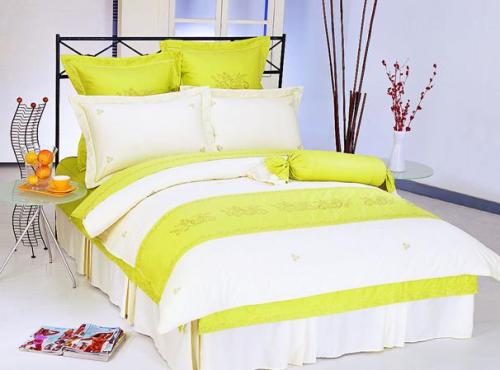Home textile or the largest textile market
At present, domestic household textile consumption accounts for only 20% of total textiles. However, with the continuous increase in the urbanization rate, Home Textile is expected to surpass garments to become the largest textile market segment. Small Christmas Balls,Xmas Balls Decoration,Plastic Christmas Balls,Shatterproof Christmas Balls Ruian Qingsen Arts & Crafts Co., Ltd , https://www.hxl-christmas.com
The fashion pace of catching up with clothing The range of home textiles covers a wide range of products such as bedding, towels, quilts, curtains, and fabrics. Together with apparel textiles and industrial textiles, it constitutes the pattern of textiles in the world.
With the development of life, bedding and other products are no longer considered as "durable goods", and its design has changed from a simple sleep need to the pursuit of health and environmental protection, and is consistent with the overall style of home improvement. Many fashion designers have turned to home textile design fields. A large number of international fashion clothing brands have also moved to the home textile market. The Chinese national textile industry is trying its best to catch up with the fashion industry's fashion.
"Now, bedding, whether it is design, color, or style, as well as the use of materials and classic elements, are becoming more and more fashionable. Many designers try to subvert the purely functional products by promoting home textiles' fashion. Design," said the expert. The expert also believes that the total market for home textile products such as bedding will exceed clothing and become the largest consumer of textiles.
It is the largest market in the world with a global outlook. At present, the market volume of home textile products in the world has reached about several hundred billion US dollars. Among them, the United States and Europe are the largest home textiles markets and consume more than 40% of global home textiles. Followed by Japan, Australia and New Zealand.
In these countries, the consumption of home textiles has long been associated with textiles for textiles and textiles for industrial use, and industrial textiles “three points in the worldâ€, of which the proportion of household textiles in the United States and Japan is as high as about 40%, exceeding clothing as the largest consumer market. Consumption in other countries is also stable at 35-38%.
However, on the other hand, due to the maturity of the market, domestic textile consumption in the United States, Europe, and Japan has reached a relatively saturated state, the growth potential of demand is limited, and the growth rate has slowed down. Emerging markets such as China and Southeast Asia will become important areas for the growth of home textiles in the future.
Under the background of the cancellation of the quota system, with the continuous increase in the cost of manufacturing, home textile companies are constantly shifting to developing countries with comparative advantages in cost. The low-end home textile products in the United States, Europe, and other countries have been constantly impacted by developing countries and are shrinking. China, India and Pakistan are winning this market with their cost advantage.
In the field of high-end products, U.S. and Europe rely on their significant advantages in product R&D, design, and innovation to implement their brand strategy—focusing on early-stage design, development, and later promotion and sales, to capitalize on their capital, technology, and information. Advantages: Orthodox leaders in high-end markets such as high-tech home textiles and luxury knitwear have achieved high profits.
The "gift-gift" trend is clearly compared with tobacco, wine, digital and other commodities. The gift-gift of home textile products is undoubtedly much later. However, the pace of development is quite fast. Today, home textile gifts have been widely used in gifts and promotions for various business events. The opening of shopping malls, corporate meetings, and employee benefits often send some exquisite bedding sets, silk quilts, etc., so that the recipients will be considerate.
Can not be ignored is that home textile products as "home soft decoration" products, and furniture, household goods, building materials, real estate and other bound together. A large number of home specialty stores began to sell home textile products, forming a situation where the purchase of furniture to send bed products, beds and bedding co-prosperity.
“At present, sales of home textile gifts have accounted for between 20% and 30% of the sales volume of gift companies.†A 2010 survey report of the National Federation of Industry and Commerce Gifts Association indicated that by the end of 2009, the total annual sales volume of the gift market has reached 890 billion, of which textiles accounted for 28%. Experts predict that in the next 10 years, the annual growth rate of the home textile consumer market will not be lower than 20%. It can be predicted that the trend of home textile gifts will become more apparent.